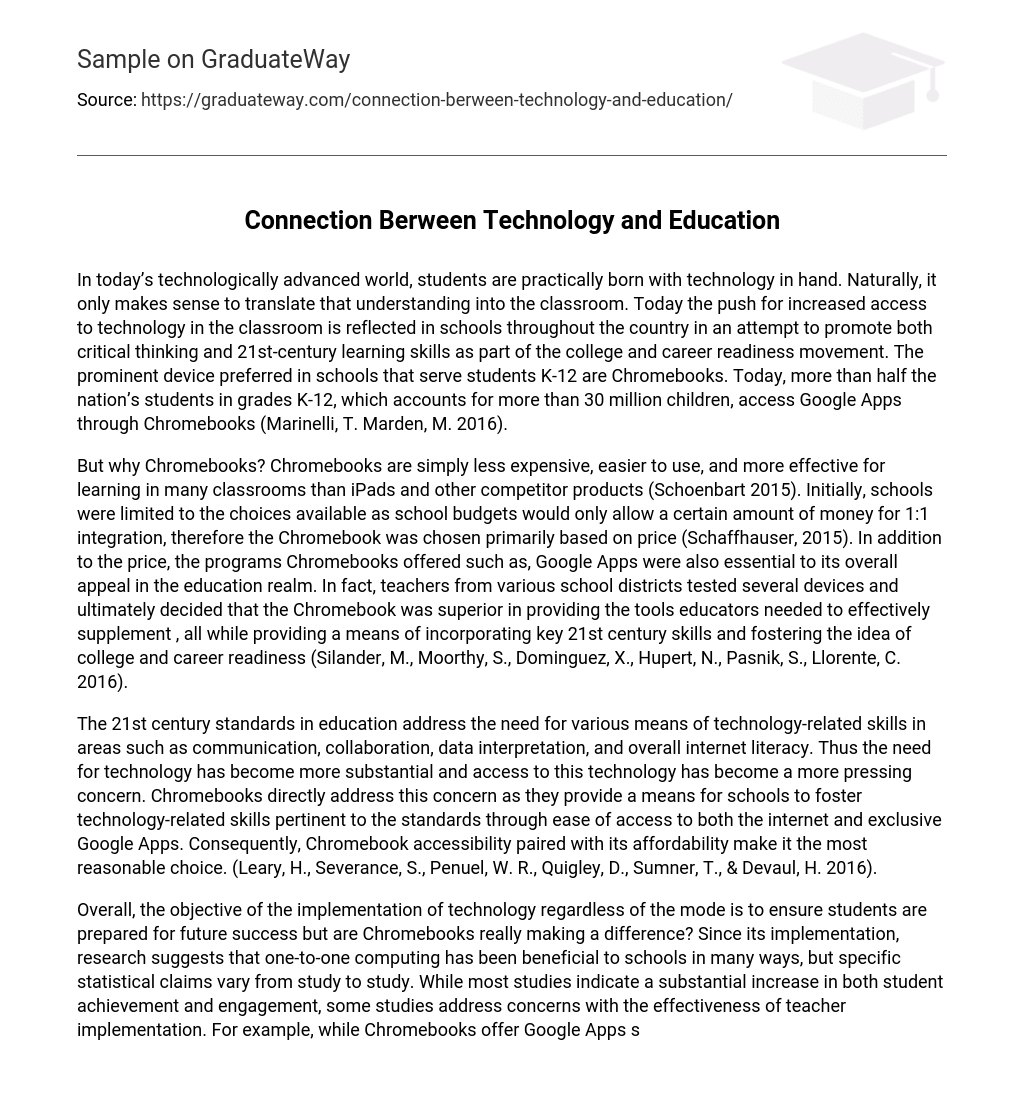In today’s technologically advanced world, students are practically born with technology in hand. Naturally, it only makes sense to translate that understanding into the classroom. Today the push for increased access to technology in the classroom is reflected in schools throughout the country in an attempt to promote both critical thinking and 21st-century learning skills as part of the college and career readiness movement. The prominent device preferred in schools that serve students K-12 are Chromebooks. Today, more than half the nation’s students in grades K-12, which accounts for more than 30 million children, access Google Apps through Chromebooks (Marinelli, T. Marden, M. 2016).
But why Chromebooks? Chromebooks are simply less expensive, easier to use, and more effective for learning in many classrooms than iPads and other competitor products (Schoenbart 2015). Initially, schools were limited to the choices available as school budgets would only allow a certain amount of money for 1:1 integration, therefore the Chromebook was chosen primarily based on price (Schaffhauser, 2015). In addition to the price, the programs Chromebooks offered such as, Google Apps were also essential to its overall appeal in the education realm. In fact, teachers from various school districts tested several devices and ultimately decided that the Chromebook was superior in providing the tools educators needed to effectively supplement , all while providing a means of incorporating key 21st century skills and fostering the idea of college and career readiness (Silander, M., Moorthy, S., Dominguez, X., Hupert, N., Pasnik, S., Llorente, C. 2016).
The 21st century standards in education address the need for various means of technology-related skills in areas such as communication, collaboration, data interpretation, and overall internet literacy. Thus the need for technology has become more substantial and access to this technology has become a more pressing concern. Chromebooks directly address this concern as they provide a means for schools to foster technology-related skills pertinent to the standards through ease of access to both the internet and exclusive Google Apps. Consequently, Chromebook accessibility paired with its affordability make it the most reasonable choice. (Leary, H., Severance, S., Penuel, W. R., Quigley, D., Sumner, T., & Devaul, H. 2016).
Overall, the objective of the implementation of technology regardless of the mode is to ensure students are prepared for future success but are Chromebooks really making a difference? Since its implementation, research suggests that one-to-one computing has been beneficial to schools in many ways, but specific statistical claims vary from study to study. While most studies indicate a substantial increase in both student achievement and engagement, some studies address concerns with the effectiveness of teacher implementation. For example, while Chromebooks offer Google Apps such as Google Classroom and Google Docs, if teachers are not familiar with the programs inner workings then they may not be able to implement the content to its full potential. Overall, Chromebooks are a new means of differentiation, but the effectiveness of its implementation is dependent upon a teachers understanding and utilization of the Google Apps. In addition, Chromebooks also have helped broaden learning in the classroom, enhanced project-based learning, and helped to prepare students for future technical careers (Salpeter 2018).





